Trigger Warning and Disclaimer: the content that you are about to read contains graphic and sensitive experiences. Reader discretion is advised. Read our full editorial notice here.
Sudan is living through one of the most challenging chapters of its modern history, as the Sudanese people face severe humanitarian and economic hardships brought on by a conflict that has dragged on for more than two years. Even before the war erupted, the country was grappling with deep-seated crises, but the current fighting has only worsened them, leaving a profound mark on daily life.
Major cities such as Khartoum, Al-Gazirah, and El Fasher have borne the brunt of this turmoil, enduring sharp economic decline and large-scale internal displacement that has strained already scarce resources and public services. El Fasher, in particular, has become a stark symbol of suffering, where the effects of displacement, economic collapse, and humanitarian catastrophe have converged in unprecedented ways.
The situation grew even more complex in western Sudan after the liberation of Khartoum in March 2025. Regaining the capital from Rapid Support Forces (RSF) control did not bring an end to the conflict; rather, it marked a turning point that shifted the fighting into other regions, especially Darfur, which has since become a major center of military operations. The shift in the balance of power between the Sudanese Armed Forces and the RSF has fueled fierce battles in several strategic areas. This escalation has not only been military in nature, it has also deeply affected civilians, who now face extraordinary challenges in securing food, shelter, and medical care.
The Situation in El Fasher Since the Outbreak of the Conflict
Since mid-2023, El Fasher has endured a complex and tragic series of events. The city has become a battleground for increasingly violent clashes, with the situation deteriorating under a full siege imposed by the RSF. This blockade has plunged the humanitarian situation into crisis. Repeated attacks on hospitals have led to a near-total collapse of the healthcare system, making medical treatment nearly impossible to obtain.
At the same time, soaring prices and an acute food shortage have further deepened the suffering. IDP camps, home to thousands fleeing violence elsewhere, have come under continuous attack, intensifying the humanitarian disaster and worsening the city’s instability.
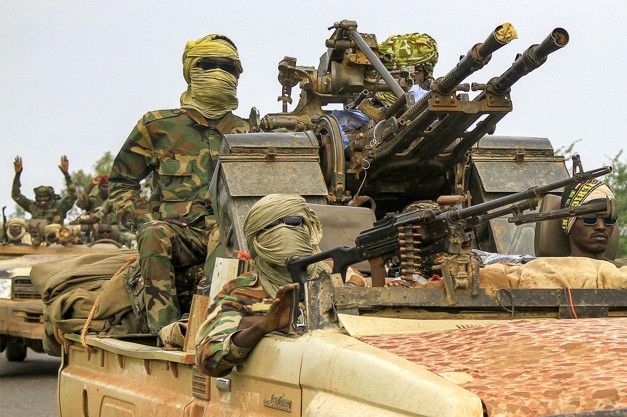
The intensification of fighting is exacerbating the humanitarian crisis. Source: The Defense Post
The Siege of El Fasher: Military and Strategic Dimensions
El Fasher holds vital strategic importance in the Darfur region, serving as a key hub for military operations and logistical supplies for the Sudanese army. The fall of this military base would have far-reaching consequences for the balance of power in the region, isolating government forces and disrupting their movement between Darfur’s states.
Economically, El Fasher sits along smuggling networks connecting southern Libya to western Sudan, making control of the city a potential source of funding and supplies. It is also a major center for trade in agricultural and livestock products; holding the city allows the imposition of taxes and levies on goods in transit, further boosting financial resources.
On the humanitarian front, El Fasher hosts large warehouses belonging to the World Food Programme and other UN agencies, making it a critical hub for food and logistical aid. Control over these facilities would grant the RSF a strategic advantage, providing essential resources to sustain their troops and expand their influence across Darfur.
In short, the struggle for El Fasher is not purely a military contest; its economic and humanitarian dimensions make it a strategic prize for any force seeking dominance in the region.
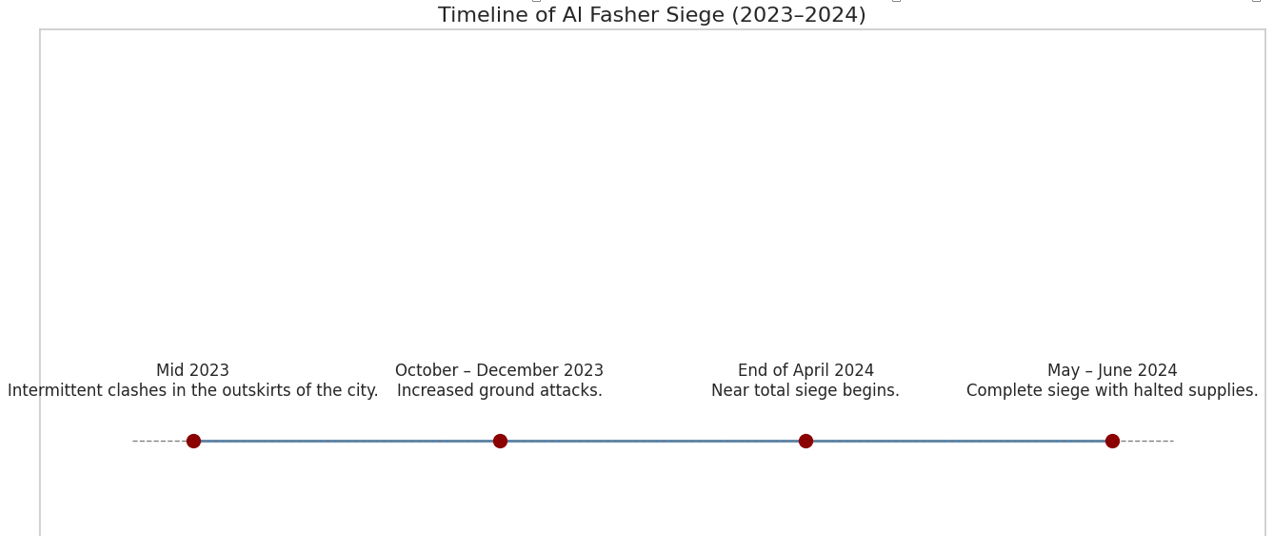
Timeline of Key Developments Leading to the Siege
Mid-2023:
El Fasher witnessed intermittent clashes between SAF and RSF, primarily on the city’s outskirts.
October–December 2023:
Ground attacks and airstrikes intensified around El Fasher, though the city was not yet under full siege.
Late April 2024:
The RSF began enforcing a near-total systematic siege, closing the main roads into El Fasher and cutting off the delivery of food and medical supplies.
May–June 2024:
The United Nations and humanitarian agencies confirmed that the situation had escalated into a complete siege, with supply routes effectively sealed and civilians prevented from leaving.
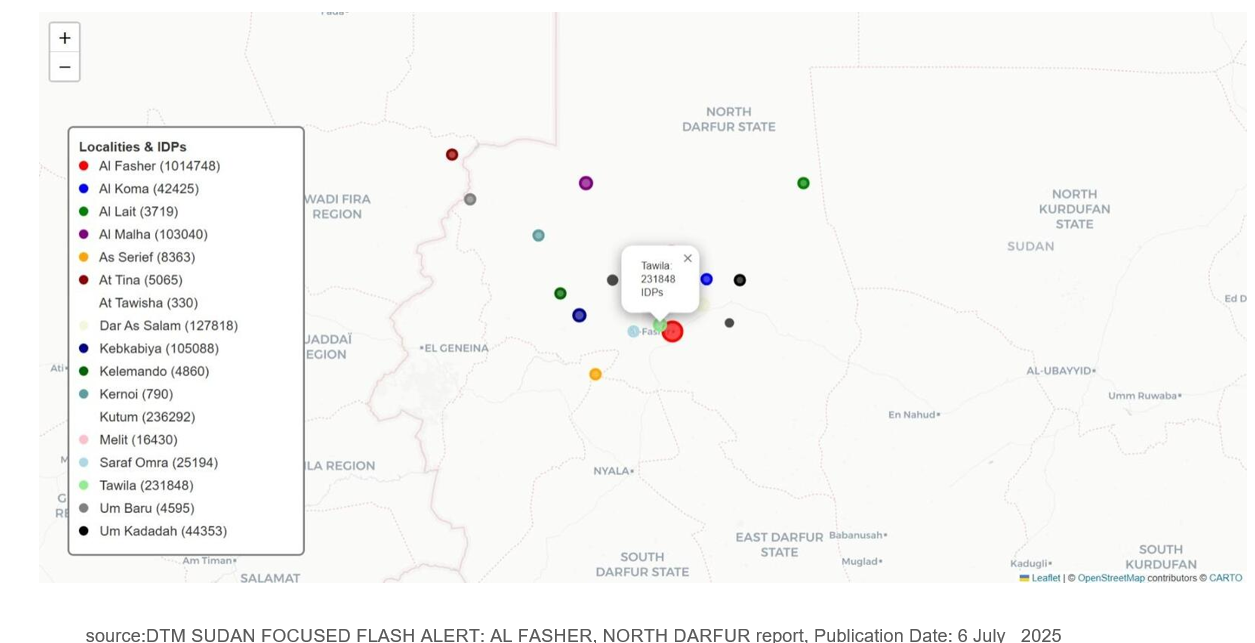
Map showing Internal displacement patterns in Central and North Darfur
Healthcare Facilities
Recent developments in North Darfur point to a sharp deterioration in healthcare conditions as the conflict between the Sudanese Armed Forces and the Rapid Support Forces escalates, reflecting the growing complexity of the humanitarian crisis in the region.
The RSF’s ongoing targeting of medical facilities, including El Fasher Teaching Hospital, the Saudi Hospital, and other health centers, has placed an overwhelming burden on an already fragile healthcare system, which suffers from weak infrastructure and chronic shortages of resources. With El Fasher under siege, access to medical services has become almost nonexistent, escalating the humanitarian emergency and putting the lives of hundreds of thousands of residents at risk.
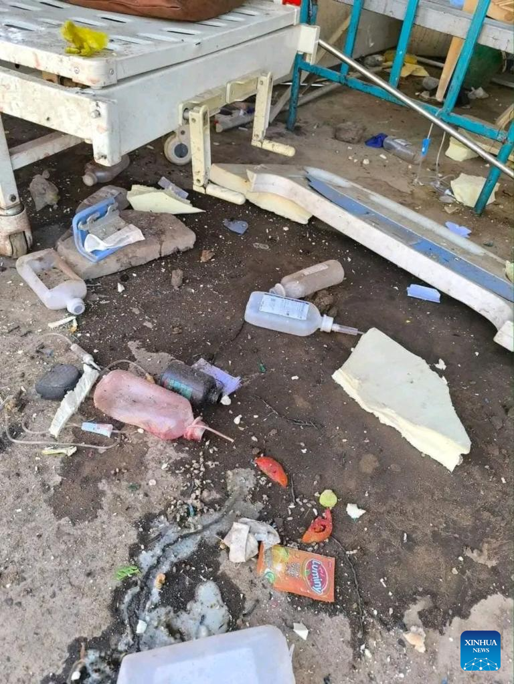
This photo, taken with a mobile phone on Dec. 13, 2024, shows the Saudi Hospital in El Fasher after a missile attack. Source: Xinhua
Documented Major Attacks
May–December 2024: Ten attacks recorded (including Babiker Nahar Hospital, South Hospital, and the Saudi Hospital).
Late 2024: One of the city’s largest hospitals, the Saudi Hospital, ceased operations following a series of strikes.
January 2025: Three major attacks documented.
Total Major Attacks (May 2024 – January 2025): Approximately 13, with confirmed casualties and injuries.
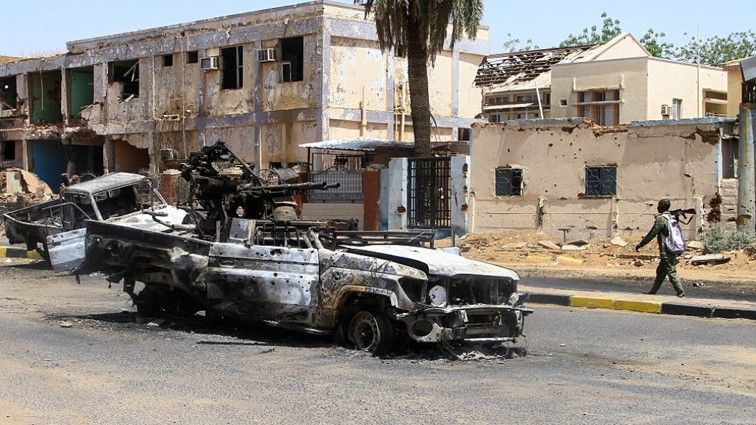
Destruction has spared nothing—not even hospitals and schools. Source: The New Arab
Food Shortages and Rising Prices
North Darfur is in the grip of a severe food crisis, with children suffering from acute malnutrition amid a critical shortage of medical supplies. Hard-hit areas such as El Fasher and Zamzam are in particularly dire condition due to the ongoing siege and road closures, which have halted the delivery of food and commercial goods.
Despite efforts by international organizations to provide aid, the situation continues to worsen. Prices began rising gradually in late 2023 as supply chains weakened, but the crisis escalated sharply in April 2024 when a full siege was imposed on El Fasher, sending market prices soaring. By 2025, with shelling ongoing and mass displacement forcing people from their homes, markets had virtually collapsed, making access to food and basic necessities extremely difficult.
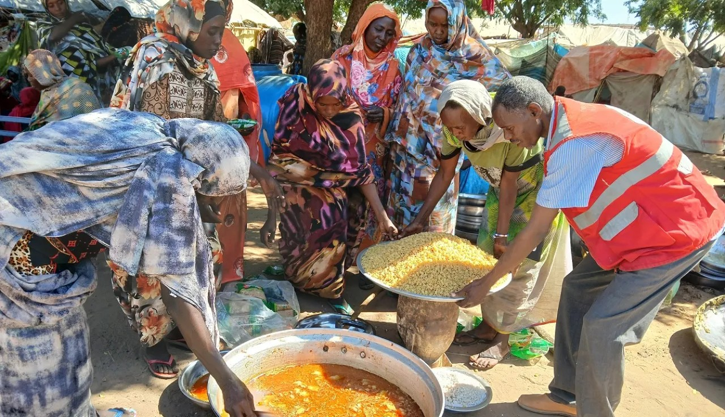
Community kitchens used to feed 10,000 displaced people per day in El-Fashir. Source: ICRC
Malnutrition Rates
The World Food Programme and health organizations estimate that that 25–30% of children in North Darfur suffer from Global Acute Malnutrition (GAM), well above the emergency threshold of 15%. In some areas around El Fasher and in displacement camps such as Zamzam and Abu Shouk, rates are believed to reach 35–40%, based on preliminary assessments in May–June 2025.
Over 80% of the population in North Darfur, more than 2.5 million people, are classified as being in either IPC Phase 3 (crisis) or IPC Phase 4 (emergency). In certain rural areas and forced displacement zones, families survive on just one meal per day, often lacking any dietary diversity.
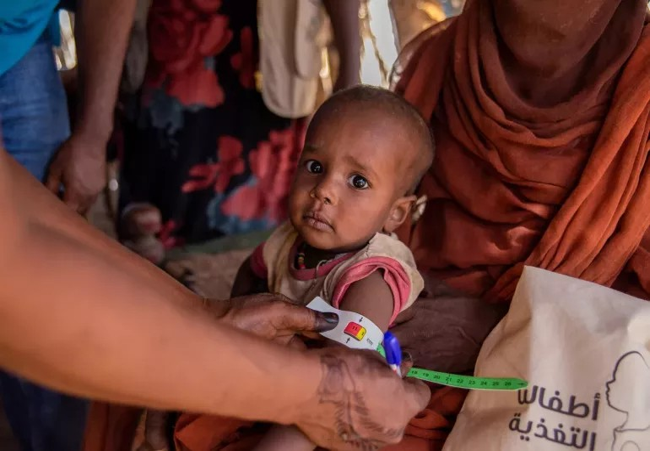
Health volunteers screen children for malnutrition during a UNICEF-supported door-to-door nutrition campaign in Kassala. Source: UNICEF
Soaring Commodity Prices
El Fasher, the capital of North Darfur, has seen an unprecedented surge in the prices of basic food staples due to the ongoing siege and the collapse of supply chains since the escalation of armed conflict in 2025. According to food security analysis from the WFP Sudan Market Monitor: The price of sorghum has skyrocketed to 11,322 Sudanese pounds, up from 1,333 pounds last year, an increase of more than 749% year-on-year, reflecting extreme inflation in local food costs.
Millet prices have risen by 180–220%, driven by reduced local production and disrupted market access. The price of wheat flour has soared to 26,500 pounds, compared to 3,000 pounds last year, an increase of over 783%, pushing bread, a daily staple, beyond the reach of most households. Cooking oil and sugar have also recorded steep annual increases of 100–140%.
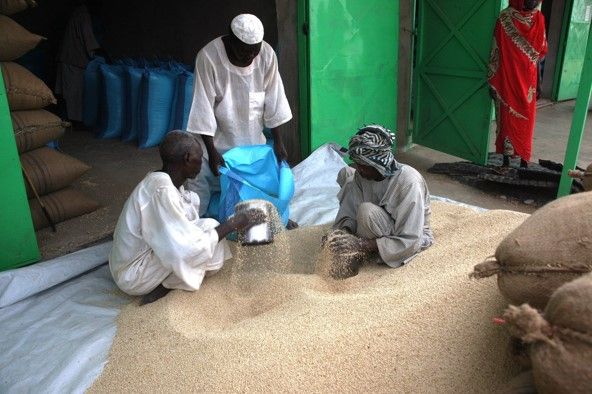
An old photo of merchants selling sorghum in East Darfur. Source: Flickr
Targeting of Displacement Camps
The humanitarian situation in North Darfur, particularly in displacement camps such as Zamzam and Abu Shouk, has grown increasingly dire under continuous shelling by the Rapid Support Forces.
In April and May 2025, tens of thousands of residents were forced to flee yet again toward Tawila and remote rural areas, reflecting a pattern of repeated displacement. Humanitarian organizations have documented serious violations, including acts of violence, systematic looting of shops, warehouses, and food facilities inside the camps, further worsening already dire living conditions. The siege of El Fasher has cut off essential supplies, including food aid and medicine, intensifying malnutrition rates and causing severe shortages of critical drugs.
Attacks on Camps in Numbers
Zamzam Camp in North Darfur, located 12 km south of El Fasher, is one of Sudan’s largest internally displaced persons (IDP) camps. Displacement reports indicate that between April and May, about 500,000 people, including 260,000 children, were uprooted, representing 99% of the camp’s population. 75% of the camp's population fled to Tawila locality, and 10% to El Fasher.
Many families have been repeatedly displaced, initially fleeing from Zamzam camp and then facing secondary displacement within the city of El Fasher. Preliminary estimates indicate that more than 700 people have been killed or injured in the camps since the beginning of 2024.
The number of displaced persons in Abu Shouk camp and its surroundings is estimated to be around 120,000 as of early June 2025. In the same camp, over 50 deaths and injuries were recorded between January and May due to shelling and nearby clashes, bringing the total casualties since the start of the year to no fewer than 70 killed and wounded, with the actual number likely higher due to difficulties in access and documentation.
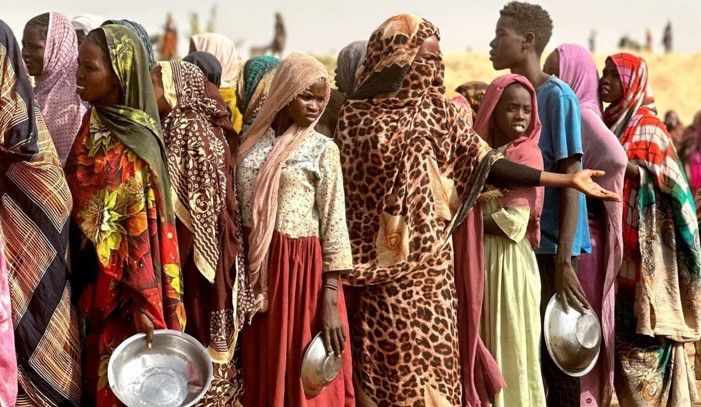
People who fled a camp for the internally displaced after it fell under RSF control queue for food near the town of Tawila in Sudan’s western Darfur region. Source: Financial Times
From the Capital to North Darfur
The situation in Sudan witnessed a dramatic shift following the liberation of Khartoum on March 26, 2025. This event reshaped the map of military control within the country. The redeployment of the Rapid Support Forces (RSF) toward the Darfur region had a significant impact in escalating military operations there, turning the region into the center of intense conflict. Reports indicate that the city of El Fasher was among the hardest-hit areas, experiencing seven major battles in a span of just five months.
This military escalation did not only affect security; it also had severe humanitarian consequences. More than 150,000 people were displaced between March and June 2025, an unprecedented rate of displacement reflecting the worsening crisis in the region. After February 2025, the rate of displacement nearly doubled compared to previous months, due to the intensification of the conflict and the expansion of fighting in and around El Fasher.
Displacement and the Intensity of Fighting After the Liberation of Khartoum
El Fasher and its surrounding areas witnessed large waves of displacement during 2025 as a result of the escalating conflict in Sudan. This began after the Sudanese army announced the "liberation of Khartoum" in March 2025, which shifted the confrontations to Darfur, especially to El Fasher.
In April of the same year, the storming of the Zamzam and Abu Shouk camps caused between 400,000 and 450,000 people to flee to the town of Tawila and areas near El Fasher. As violence continued, an additional 257 families were displaced in May toward cities in North Darfur due to ongoing shelling.
By June and July, humanitarian organizations estimated that around 379,000 displaced people had arrived in Tawila alone. This reflects the scale of the crisis, which turned El Fasher and its surrounding camps into zones of mass displacement in a very short time.
A Voice from the Heart of El Fasher
In one poignant interview, a woman from El Fasher shared her painful story, which began with the siege and heavy shelling that hit the residential neighborhoods of her city. She found herself forced to flee to Tawila in search of safety, after life in the city had become nearly impossible.
She spoke of the difficult days spent amidst fear and instability, and the hard decision she made to leave despite the risks. During her journey, she faced major challenges and witnessed heartbreaking scenes that left a deep emotional scar, her experience standing as a testament to the suffering of many others enduring similar circumstances.
Before the Siege: Open Markets and Livable Conditions
Before the siege on El Fasher began, life looked completely different. She recalled how vibrant the markets were, with goods arriving from all over: from Al-Dabba, Mellit, from the new dam (Khazan Jadeed), Al-Tena, and even from Jebel Marra. There was a wide variety of agricultural produce and foodstuffs, and prices were reasonable enough that everyone could afford what they needed without difficulty.
The Only Hospital Under Fire
Speaking about the health situation in El Fasher, the woman said: “the healthcare situation is truly catastrophic. The Saudi Hospital is the only one still operating, but it is under continuous shelling, which makes providing medical services extremely difficult. Life-saving medicines are completely unavailable, and the few remaining medical staff are making extraordinary efforts to work under this constant bombardment. The feeling of helplessness experienced by both patients and doctors is indescribable under these harsh conditions.”
Between Despair and Hope: A Tale of Waiting for Aid
Regarding humanitarian aid, the situation has been described as lacking “humanitarian corridors,” making it extremely difficult to deliver. The truth is, the situation is deeply tragic, humanitarian corridors are virtually non-existent, and the western route through Chad and Jebel Marra is long and extremely difficult.
The aid that does manage to reach the region is very limited and insufficient to meet the needs of displaced people in camps like Tawila, Dar Al-Salam, Khazan Jadid, and Shangil Tobay, where there are virtually no services. Thousands of families are living in harsh conditions, without shelters, exposed in the open. It doesn’t end there: there is a severe shortage of healthcare services in most areas, and cholera is spreading in alarming rates.
The Camps are Burning: The Ongoing Displacement Crisis
The camps did not become the safe havens people had hoped for. As the shelling continued and the scope of attacks expanded, some of these camps turned into warzones, forcing thousands of families to flee once again, without shelter, without a destination, and with doubled fear.
Zamzam Camp, one of the largest displacement camps, was completely evacuated after six consecutive days of attacks. Tents were not spared, nor were water tanks or even children. This was followed by the evacuation of the Al-Salam (Abuja) camp in El Fasher, which has now turned into an open battlefield and is no longer safe even to pass through. As for Abu Shouk Camp, it experienced a partial evacuation, but is now under shelling, and life there has become nearly impossible.
This catastrophe means that thousands of displaced people have found themselves being displaced again, from places they were already displaced to, starting yet another uncertain journey, without any guarantees, shelter, food, or protection.
A Journey of Suffering from El Fasher to Tawila
A resident describes her journey from El Fasher to Tawila, which lies 64 kilometers to the west:
"It was one of the hardest experiences I’ve ever been through. The road feels like the road of last chances, where hope and fear are tangled together every moment. My phone was stolen during the trip, and that was just a small part of the suffering I witnessed with my own eyes. Children and adults were dying of thirst, a sight I’ll never forget. Looting, rape, and kidnappings for ransom were happening horrifically. Men and young boys were especially targeted, mercilessly killed and captured."
"The overall situation is catastrophic. Thousands of people are out in the open, vulnerable to disease and at risk of being displaced again if this war doesn’t stop. Even the town of Tawila isn’t safe in the long term. The governments and warring parties must seek peaceful solutions and negotiate, because people have reached an unbearable level of humiliation, exploitation, killing, and displacement." – A resident from El Fasher
"Statistics aren’t just numbers; they carry context and meaning." – Jordan Ellenberg, How Not to Be Wrong
Numbers may reveal the scale of the tragedy, but they cannot convey the pain or reflect the suffering people endure moment by moment.
The humanitarian crisis in Sudan is emerging as one of the region’s most complex tragedies, where political and military dimensions intersect with social and economic consequences, forming a devastating reality that tears through civilian life. The siege imposed on the city of El Fasher reflects a systematic approach to weaken the population by depriving them of the most basic necessities of life, intensifying their daily suffering beyond description.
What is happening in North Darfur is not just a crisis, it is a humanitarian catastrophe affecting the lives of hundreds of thousands. It cannot be reduced to statistics or confined to reports.